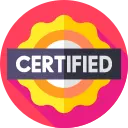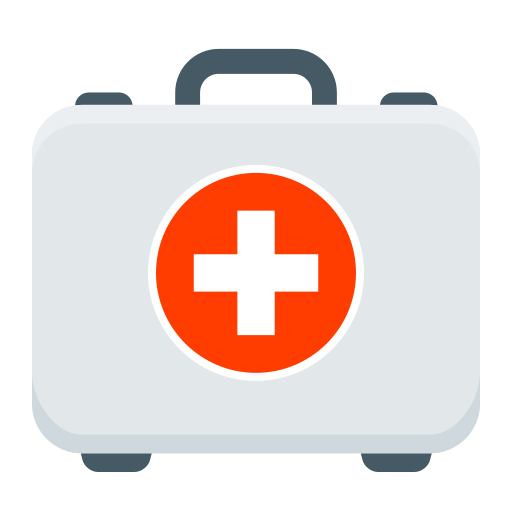FREE
daily Instructor: Dr. Wayne MartinezCourse Overview
Foundational Principles of Pilates
The Six Classical Principles
- Centering: Mastering the concept of the 'powerhouse' as the central control point for all movements, understanding its role in stability and force generation.
- Concentration: Cultivating focused mental engagement with the body's movements, enhancing kinesthetic awareness and precise execution of exercises.
- Control: Executing every movement with deliberate thought and precision, eliminating momentum and ensuring purposeful, controlled actions.
- Precision: Achieving exact and accurate execution of each exercise, focusing on optimal alignment, specific movement pathways, and correct muscle activation.
- Breath: Learning specific breathing patterns (thoracic, lateral, posterior) that support core engagement, stabilize the spine, and enhance oxygen exchange during movement.
- Flow: Connecting individual movements smoothly and gracefully, creating continuous, integrated, and efficient sequences without interruption.
Core Engagement and Stability
- Deep abdominal engagement: Identifying, activating, and integrating the transversus abdominis, multifidus, and obliques for comprehensive core support.
- Neutral spine and pelvic alignment: Understanding and maintaining the natural curves of the spine and optimal pelvic position during static postures and dynamic movements.
- Scapular stability: Developing strength and control of the muscles surrounding the shoulder blades to ensure stable upper body support and efficient arm movement.
- Pelvic floor activation: Integrating the pelvic floor muscles with deep core engagement and breath work to enhance intra-abdominal pressure regulation and stability.
Anatomy, Physiology, and Biomechanics for Movement
Skeletal System in Movement
- Bone structure and function: Detailed knowledge of the major bones and joints (e.g., spine, pelvis, shoulder girdle, hip, knee, ankle) relevant to Pilates exercises.
- Major joints and their range of motion: Understanding the specific movements (flexion, extension, rotation, abduction, adduction) possible at key joints and their normal limits.
- Postural alignment: Analyzing ideal postural lines and common deviations (e.g., kyphosis, lordosis, scoliosis, pelvic tilt) and their implications for movement.
Muscular System in Movement
- Major muscle groups and their actions: Identifying the primary muscles responsible for specific movements (agonists), opposing muscles (antagonists), and supporting muscles (synergists) in Pilates exercises.
- Muscle contractions: Differentiating between isometric (static hold), concentric (shortening), and eccentric (lengthening) muscle contractions and their application in exercise execution.
- Core musculature: In-depth understanding of the anatomy and function of the deep and superficial abdominal muscles, spinal extensors, and pelvic floor muscles.
Biomechanics of Pilates Exercises
- Leverage and force application: Applying principles of leverage to understand how body position and equipment settings influence exercise intensity and muscle engagement.
- Gravity and resistance: Analyzing the impact of gravity and apparatus spring resistance on exercise difficulty, muscle activation, and movement control.
- Movement planes and axes: Deconstructing exercises by understanding the planes (sagittal, frontal, transverse) and axes of rotation through which movements occur.
- Kinetic chain principles: Recognizing how movement or stability at one joint affects other segments of the body, understanding integrated movement patterns.
Mat Pilates Repertoire Mastery
Foundational Mat Exercises
- The Hundred: Mastering the specific breathing pattern, sustained core engagement, and spinal stabilization while coordinating controlled limb movements.
- Roll Up: Developing the ability to articulate the spine segment by segment, strengthening deep abdominals and improving spinal flexibility.
- Single Leg Stretch: Coordinating reciprocal leg movements with stable core engagement and precise breath control, challenging abdominal endurance.
- Double Leg Stretch: Advancing core challenge by simultaneously extending and returning both limbs, demanding greater abdominal strength and control.
- Spine Stretch Forward: Enhancing hamstring flexibility and achieving controlled spinal flexion while maintaining core support and spinal length.
Intermediate Mat Exercises
- Corkscrew: Integrating rotational core strength with hip mobility, executing controlled spinal rotation while stabilizing the pelvis.
- Saw: Combining spinal rotation and lateral flexion with a hamstring stretch, requiring precise core control and articulation.
- Swan Dive: Strengthening the back extensors and improving spinal extension with control, emphasizing lift and length rather than collapse.
- Teaser: Building advanced core strength, balance, and control by holding an elevated V-sit position, demonstrating mastery of the powerhouse.
- Open Leg Rocker: Developing balance and spinal articulation through a rhythmic rolling motion, improving flexibility and core stability.
Advanced Mat Exercises
- Boomerang: A complex, flowing sequence integrating rolling, leg circles, and a forward fold, demanding high levels of coordination, core control, and flexibility.
- Control Balance: An advanced inversion that challenges balance, core strength, and hamstring flexibility, requiring precise body control and stability.
- Push Up: A dynamic full-body exercise demonstrating upper body strength, core stability, and integrated movement through a plank and push-up sequence.
- Seal: Combining spinal articulation with rhythm and core control, requiring balance and coordination during a rolling motion.
Pilates Apparatus Repertoire Mastery
Reformer Exercises
- Footwork: Establishing precise lower body alignment, strengthening the ankles, knees, and hips, and understanding spring resistance and carriage control.
- The Hundred on Reformer: Enhancing the core challenge of the classical exercise by incorporating dynamic leg movements against spring resistance, demanding greater abdominal endurance.
- Long Box series (Swan, Pulling Straps): Strengthening the posterior chain, back extensors, and improving spinal extension and stability through prone exercises.
- Short Box series (Round Back, Flat Back, Twist): Developing nuanced core control for segmental spinal flexion, extension, and rotation in a seated position.
- Strap work (Leg Circles, Frogs): Improving hip mobility, strengthening the hip flexors and adductors, and enhancing pelvic stability during dynamic leg movements.
Cadillac Exercises
- Roll Down Bar: Achieving segmental spinal articulation and core control against the resistance of the push-through bar, enhancing spinal flexibility and abdominal strength.
- Leg Springs (Circulation, Frogs): Enhancing hip mobility, strengthening inner thigh muscles, and improving pelvic stability and control during isolated leg movements.
- Push Through Bar (Seated, Supine): Developing powerful core strength for spinal flexion and extension, using varied spring resistance for support or challenge.
- Trapeze (Hanging exercises): Building significant upper body strength, grip strength, and spinal decompression, introducing advanced core challenges through inversions and suspended movements.
Pilates Chair Exercises
- Foot Press (Single, Double): Strengthening the lower body, improving balance, and developing core stability through controlled leg presses against spring resistance.
- Pike: An advanced exercise demanding significant core strength, shoulder stability, and hamstring flexibility to lift the hips and maintain balance.
- Teaser on Chair: Elevating the challenge of the classical Teaser by performing it on the chair, requiring superior balance and core control in an unstable environment.
- Standing exercises (Side Bend, Lunges): Integrating balance, strength, and coordination into functional standing movements, enhancing proprioception and stability.
Barrels (Spine Corrector, Ladder Barrel) Exercises
- Spine Corrector (Back Extension, Leg Pulses): Supporting and enhancing spinal extension, improving flexibility, and performing targeted core and limb strengthening exercises.
- Ladder Barrel (Swan, Climb a Tree): Facilitating deep spinal articulation, achieving full-body stretches, and executing challenging strength exercises that utilize the barrel's curve for support or resistance.
Client Assessment and Program Design
Postural Analysis and Movement Assessment
- Static postural assessment: Systematically identifying common postural deviations from anterior, posterior, and lateral views, recognizing imbalances and misalignments.
- Dynamic movement assessment: Observing movement patterns during fundamental exercises and functional tasks, identifying compensations, inefficient movement, and muscular imbalances.
- Gait analysis: Basic observation of walking patterns to identify asymmetries, inefficiencies, or deviations in lower body mechanics and overall posture.
Individualized Program Development
- Goal setting: Collaborating effectively with individuals to establish clear, realistic, and achievable movement and fitness goals based on their needs and capabilities.
- Exercise selection: Applying comprehensive knowledge of the Pilates repertoire to select appropriate exercises that align with assessment findings and client-specific goals.
- Progression and regression strategies: Implementing systematic methods to modify exercises, increasing or decreasing their challenge to suit varying skill levels, needs, and progress.
- Session structuring: Designing well-balanced and progressive Pilates sessions that include effective warm-up, main work, and cool-down components.
- Flow and transitions: Creating seamless and efficient transitions between exercises, promoting an integrated and continuous movement experience within a session.
Modifications, Progressions, and Special Populations
Modifying for Specific Needs
- Common musculoskeletal conditions: Understanding how to safely and effectively adapt Pilates exercises for individuals experiencing low back pain, neck pain, shoulder issues, or other common orthopedic concerns.
- Joint limitations: Adjusting the range of motion, exercise parameters, and equipment settings for individuals with limited joint mobility, arthritis, or post-surgical restrictions.
- Flexibility and strength imbalances: Selecting and modifying exercises to specifically address identified areas of tightness or weakness, promoting balanced muscular development.
Pilates for Special Populations
- Pre/Post-Natal Pilates: Understanding physiological changes during pregnancy and postpartum, implementing safe and effective modifications focused on core integrity, pelvic floor health, and postural support.
- Older Adults: Adapting exercises to address considerations such as bone density, balance challenges, joint health, and reduced mobility commonly found in older adult populations.
- Beginners and Deconditioned Individuals: Developing strategies for introducing foundational Pilates principles and exercises to those new to movement or recovering from periods of inactivity.
- Athletes and Advanced Clients: Creating challenging and sport-specific programs that enhance athletic performance, address muscular imbalances, and promote injury prevention for high-level individuals.
Problem-Solving and Adaptability
- Addressing client discomfort: Developing skills to identify, assess, and respond appropriately to client discomfort or pain during exercise, including when to modify or cease an exercise.
- Creative modifications: Cultivating the ability to spontaneously adapt exercises or create new variations on the spot to suit unexpected client needs, equipment limitations, or unique body challenges.
- Cueing for different learning styles: Mastering the use of diverse cueing techniques (verbal, tactile, visual, imagery) to effectively communicate exercise instructions and enhance client understanding and performance.
FlashCards
External Resources
Add-On Features
Expert Instructor
Get live study sessions from experts
Honorary Certification
Receive a certificate before completing the course.
Currency
Sign in to change your currency
I'm not ready to enroll?
Tell us why, because it matters.
Enroll With a Key
Course Benefits
Get a Job
Use your certificate to stand out and secure new job opportunities.
Earn More
Prove your skills to secure promotions and strengthen your case for higher pay
Learn a Skill
Build knowledge that stays with you and works in real life.
Lead Teams
Use your certificate to earn leadership roles and invitations to industry events.
Visa Support
Use your certificate as proof of skills to support work visa and immigration applications.
Work on Big Projects
Use your certificate to qualify for government projects, enterprise contracts, and tenders requiring formal credentials.
Win Partnerships
Use your certified expertise to attract investors, get grants, and form partnerships.
Join Networks
Use your certificate to qualify for professional associations, advisory boards, and consulting opportunities.
Stand Out Professionally
Share your certificate on LinkedIn, add it to your CV, portfolio, job applications, or professional documents.
Discussion Forum
Join the discussion!
No comments yet. Sign in to share your thoughts and connect with fellow learners.
Frequently Asked Questions
For detailed information about our Pilates Instructor Certification course, including what you’ll learn and course objectives, please visit the "About This Course" section on this page.
The course is online, but you can select Networking Events at enrollment to meet people in person. This feature may not always be available.
We don’t have a physical office because the course is fully online. However, we partner with training providers worldwide to offer in-person sessions. You can arrange this by contacting us first and selecting features like Networking Events or Expert Instructors when enrolling.
Contact us to arrange one.
This course is accredited by Govur University, and we also offer accreditation to organizations and businesses through Govur Accreditation. For more information, visit our Accreditation Page.
Dr. Wayne Martinez is the official representative for the Pilates Instructor Certification course and is responsible for reviewing and scoring exam submissions. If you'd like guidance from a live instructor, you can select that option during enrollment.
The course doesn't have a fixed duration. It has 25 questions, and each question takes about 5 to 30 minutes to answer. You’ll receive your certificate once you’ve successfully answered most of the questions. Learn more here.
The course is always available, so you can start at any time that works for you!
We partner with various organizations to curate and select the best networking events, webinars, and instructor Q&A sessions throughout the year. You’ll receive more information about these opportunities when you enroll. This feature may not always be available.
You will receive a Certificate of Excellence when you score 75% or higher in the course, showing that you have learned about the course.
An Honorary Certificate allows you to receive a Certificate of Commitment right after enrolling, even if you haven’t finished the course. It’s ideal for busy professionals who need certification quickly but plan to complete the course later.
The price is based on your enrollment duration and selected features. Discounts increase with more days and features. You can also choose from plans for bundled options.
Choose a duration that fits your schedule. You can enroll for up to 180 days at a time.
No, you won't. Once you earn your certificate, you retain access to it and the completed exercises for life, even after your subscription expires. However, to take new exercises, you'll need to re-enroll if your subscription has run out.
To verify a certificate, visit the Verify Certificate page on our website and enter the 12-digit certificate ID. You can then confirm the authenticity of the certificate and review details such as the enrollment date, completed exercises, and their corresponding levels and scores.
Can't find answers to your questions?
Certification Guide

Complete the Course
Begin the course by selecting your experience level in the course content section:
Beginner: Master the material with interactive questions and enough time.
Intermediate: Get certified faster with hints and balanced questions.
Advanced: Challenge yourself with more questions and less time

Earn Your Certificate
To download and share your certificate, you must achieve a combined score of at least 75% on all questions answered.





